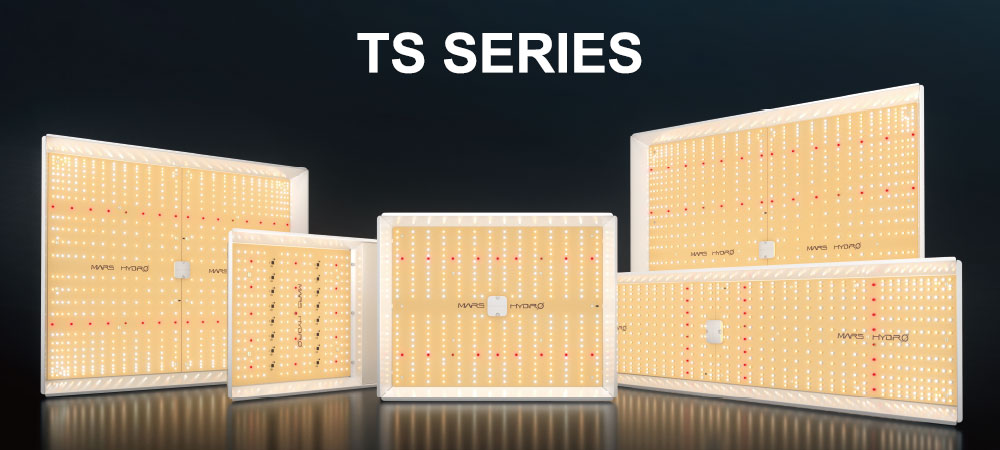
Embracing the full potential of LED lighting in cannabis cultivation involves a deep understanding of light frequencies, wavelengths, and their effects on plant growth. This post provides a technical insight into using LED lighting to optimise your cannabis harvest, emphasising the scientific aspects that every serious home grower should know.
The Science of LED Lighting in Cannabis Cultivation
LEDs have revolutionised indoor growing due to their efficiency and ability to tailor specific light spectra. Different wavelengths of light, measured in nanometers (nm), have distinct effects on cannabis growth and development.
Understanding Light Spectrum and Plant Response
Photosynthetically Active Radiation (PAR):
- PAR is the range of light (400-700 nm) that plants use for photosynthesis.
- LEDs can be engineered to emit peak wavelengths within the PAR range for optimal photosynthetic response.
Blue Light (400-500 nm):
- Promotes vegetative growth and stronger root development.
- Higher concentrations of blue light lead to more robust, shorter, and bushier plants.
Red Light (620-700 nm):
- Essential for flowering and bud development.
- Red light stimulates phytochrome interactions that trigger flowering in cannabis.
Far-Red Light (700-800 nm):
- Influences shade avoidance responses and can speed up flowering cycles.
- Extended exposure after the main light cycle can encourage quicker flowering.
Green Light (500-600 nm):
- Often overlooked, green light penetrates deeper into the canopy, supporting photosynthesis in lower leaves.
Advanced LED Cultivation Techniques
Tailored Vegetative and Flowering Spectra:
- Use LED lights with a higher ratio of blue to red light in the vegetative stage.
- Transition to LEDs with a higher red light ratio during flowering.
UV Light Exposure:
- UV light (below 400 nm) in small doses can increase trichome density and THC concentration.
- Be cautious as excessive UV can be harmful to plants and humans.
Intensity and Distance Control (PPFD – Photosynthetic Photon Flux Density):
- Adjust the intensity of the LEDs (measured in PPFD) to provide optimal light for each growth stage.
- Keep an optimal distance from the canopy to prevent light burn and ensure even light distribution.
Photoperiod Manipulation:
- Experiment with different light schedules to influence flowering times and plant morphology.
Considerations for Effective LED Implementation
- Heat Dissipation: Ensure proper heat management in your grow space, as LED efficiency is affected by temperature.
- Regular Calibration: Calibrate your light setup regularly to maintain optimal performance and efficiency.
- Light Quality Over Time: Monitor the degradation of LED quality over time and replace them as needed to maintain consistent light output.
Understanding and utilising the complex spectrum of LED lighting can profoundly impact the growth, potency, and yield of your home-grown cannabis. By mastering the technical aspects of light frequencies and wavelengths, you can significantly enhance the quality of your harvest, turning an ordinary grow room into a sophisticated cultivation space.
High-Performance LED Solutions
To complement the technical information with some practical advice, let's discuss specific LED systems that have proven effective for various stages of cannabis growth.
For the Vegetative Stage:
Recommended LED System: The Mars Hydro TS Series, specifically the Mars Hydro TSW 2000, is excellent for the vegetative stage. Its full-spectrum output with a bias towards the blue spectrum encourages robust vegetative growth.
Timing for Switching: Keep your plants under this light until they reach about 50-60% of their final height. This usually takes about 3 to 6 weeks, depending on the strain.
Transition to Flowering Stage:
When to Switch: As soon as you change your light cycle to 12/12 to induce flowering, it's time to switch your lighting.
Recommended LED System for Flowering: The Spider Farmer SF Series, like the Spider Farmer SF-2000, is a great choice. It offers a full spectrum with an enhanced red light output, ideal for the flowering stage. The addition of red promotes bud development and flowering.
Pro Tip: Introducing a light system with some far-red like the HLG 300L Rspec in the final weeks of flowering can encourage faster flowering and potentially increase resin production.
Considering UV Light:
Product Recommendation: If you're looking to experiment with UV, the California Lightworks SolarSystem UVB kit (or something similar) is a reputable option. It can be used during the last few weeks of flowering to enhance trichome production and potency.
Usage Caution: Use UV lights carefully. Limit exposure to a few hours a day and ensure you're protected when entering the grow area.
